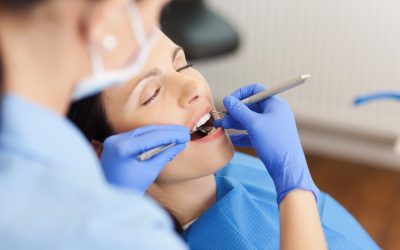Dental implants are considered one of the best procedures a cosmetic dentist in Manassas can perform. They restore a smile, chewing function and can even improve phonation. Once you have decided to get a dental implant, it is necessary to bear in mind the timing of the treatment plan within the overall plan. The implant placement comprises of various stages, but here is information on the first and most important stage.
Whether or not a dentist proceeds with implant placement depends on the location of the missing tooth and the various elements of the diagnosis and initial treatment. Patients will have to fill out a medical questionnaire and take initial radiographs (panoramic in all cases and long cone technique when teeth remain). Then a clinical examination of the teeth (finding mobility, state of tooth surfaces, condition of the periodontal tissues, probing, etc.), clinical examination of the occlusion (study of movements, muscle spasms search, noise, etc.) and determination of the patient’s motivation will follow. At this stage, prints are taken and the situation of the maxillary arch is examined.
Study models are mounted and the decision to go forward is determined by the cosmetic dentist in Manassas. The elements of the future prosthesis are determined on these models: Possible changes to the vertical dimension, replacement of missing teeth and correction of present teeth, and determining the number and location of implants required. When treatment begins, the dentist will delete the possible sources of infection by subgingival curettage, removal of isolated roots and so on. If you already have an implant or other prosthesis, it must be restored or be replaced by temporary restorations that can be used until the final prosthesis is made.
It is often necessary, at this stage, that the dentist reduces braces that hinder the inclusion of temporary implants, offering a little comfort. Surgical splints are made after the implant is added, tested and sterilized. Severe occlusal pathologies sometimes involve significant reductions in the opening of the mouth and should be treated at this stage with the help of braces or dentures, as may preclude surgery for lack of access.







